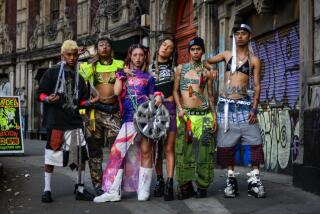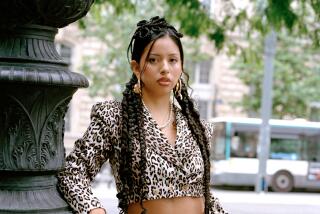Impressive exhibition tells the story of Latin America in pictures
An injured woman is pulled out of a protest in Peru in 1960. A boy lies next to a bent bicycle, a cinematic puddle of blood pooling next to his head in Mexico City, 1958. A crowd gathers before a hanged man at a plaza in La Paz, Bolivia, in 1946 — yet another moment of intense unrest in a country plagued by coups.
This trove of images can be found on view as part of the exhibition “Urbes Mutantes: Latin American Photography 1944-2013,” at the International Center of Photography in New York City. The show includes more than 200 images from Mexico, Venezuela, Argentina, Cuba, Chile, Peru, Bolivia, Brazil, Colombia and Ecuador, as well as vintage photographic books from various countries. (Many, as design writer Alexandra Lange points out, will be of interest to people into graphic design.)
It is a lot to take in — but, for a continent that has tended to be underrepresented in arts institutions in the United States, it is a welcome barrage.
The show is, indeed, a sprawling one, covering many decades, movements, photographers, styles and countries. But there are some unifying factors. For one, much of the work is black and white, which helps bring together — at least at the level of visual impact — all of this vastly different work.
Second, the thematic focus is primarily urban (hence the title). Certainly, this is due to the fact that the rise of modern photography coincided with the rise of the modern city, so the two are inextricably linked, in Latin America as elsewhere. But the show nonetheless nods to some of the unique aspects of Latin American urbanization that occurred between the 1950s and ‘80s — a settlement that was driven as much by political turmoil as economic need.
It also provides a window into Latin America that goes beyond exotic tropicalia and pre-Columbian ruins, examining the cities of the poor, of the night owls, of the struggling mid-level bureaucrat trying to keep a toe in the middle class. These are cities of pop signage, brutalist architecture and geometric patterns. They are places that are as absurd as they are dire. It is an edifying view of the continent.
And then, of course, there is the photography itself, which ranges from street photography to figurative portraits to abstraction and minimalism. The images hail from the collection of French couple Leticia and Stanislas Poniatowski, the latter of whom is the nephew of prominent Mexican writer Elena Poniatowska, and who grew up going to Mexico as a matter of course. Their photography collection, which contains thousands of images from photographers working in Latin America, is certainly unique in its breadth and depth.
And as showcased in this exhibition, it can also be a bit unwieldy. The show goes off on tangents, featuring images that aren’t strictly photography, but are instead documentation of conceptual projects. And, there is, quite inexplicably, a photograph of Frida Kahlo by Lola Álvarez Bravo, from the 1940s, which sticks out like a famous sore thumb in an exhibition that is more about the anonymity of existing in the vast urban landscape.
But this is a quibble, because the show — and its comprehensive 534-page catalog — is also full of revelation: the urban walls and forbidden bordellos of Fernell Franco of Colombia; the rare abstract pictures of Argentine artist León Ferrari, a figure better known for his calligraphic drawings; the dim nightscapes of Luz María Bedoya, from Peru; the popular iconography captured by Swiss Venezuelan Barbara Brändli; and the photos of revolution in Bolivia by Herbert Kirchhoff.
I mean, when was the last time you saw work from Bolivia?
“All of the great movements of photography had relevance in Latin America,” says Alexis Fabry, the independent curator who helped organize the exhibition (and who has helped develop the collection for the Poniatowskis). “All of the great movements in Western art are present.”
But there are the elements that make it uniquely Latin American, too. “The weight of literature is present, the weight of dictators and protest,” says Fabry. “And, of course, there are themes that are specific to individual countries.”
A poignant image by Pablo Gasparini snapped in Quito in 1982 shows a man with indigenous features standing opposite a fashion ad extolling European standards of beauty. Meanwhile, the photos of the Venezuelan-born Luis Molina Pantin show the ways in which drug money has made vernacular architecture more extravagant in cities like Cali, Colombia.
If you’re in New York, by all means pay the show a visit — and allow plenty of time, since there is a lot to soak in. And if you can’t make it, there is always the catalog (RM/Toluca; $80 and totally worth it), which beautifully reproduces a lot of the photography at a good scale. As with the show, the text could offer more background on each photographer and their milieu, but, again, it’s worth it simply to look at the images, many of which have remained little-seen outside of Latin America.
“Urbes Mutantes: Latin American Photography, 1944-2013” is on view at the International Center of Photography, 1133 Avenue of the Americas, New York, icp.org. The catalog is available through Artbook D.A.P.
More to Read
The biggest entertainment stories
Get our big stories about Hollywood, film, television, music, arts, culture and more right in your inbox as soon as they publish.
You may occasionally receive promotional content from the Los Angeles Times.











